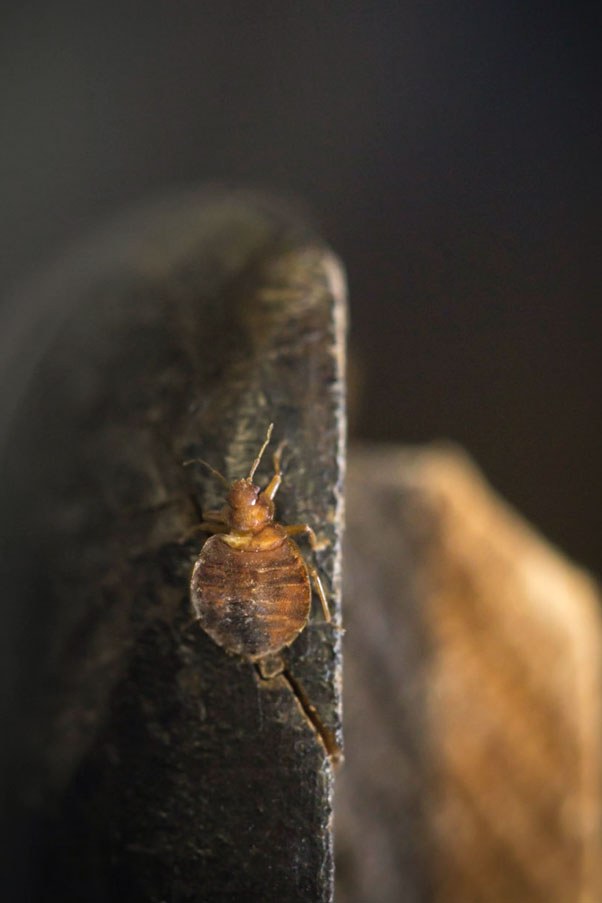Jonathan Hernandez, M.S. candidate in Entomology

Adult bedbug
Bed bugs, the creepy crawly bloodsucking parasites that have plagued mankind for millennia. During the day they hide in the shadows of your mattress seams, patiently waiting for nightfall to emerge from the crevices and feed on your blood. Nobody wants these pesky parasites as roommates, which is why Americans spent an estimated $644.7 million in 2017 to eradicate them from their homes. Given their small size and incredible durability, one of the most effective methods of bed bug extermination is the use of pesticides. But there's a problem - the chemicals just aren't working like they used to. With our primary tactic of defense beginning to fail, what can we do to keep these tiny bloodsuckers at bay? To answer this question, Penn State Master's student Jonathan Hernandez is looking to their genes.
Genes are hereditary units passed down from parents to offspring that contain the genetic information used to build an organism. These genes code for different proteins that affect the physical characteristics of the individual, which can either help or hinder it in its environment. Some bed bugs have genes that have allowed them to quickly develop a resistance to certain pesticides over time, which has contributed to their ability to persist so prolifically in urban environments.

"These insects are crazy!" says Jonathan. "They literally reproduce all year round, which explains part of the reason they evolve so quickly. This has led to many bed bug populations evolving pesticide resistance all around the world, and has contributed to their resurgence as a major urban pest in the past couple decades. To combat the increase in resistant bed bug populations, new pest management methods must be developed for the future."
"This is a bed bug war!" he exclaims,
"And all is fair in war."
One weapon researchers have on their side in this war against pesticide-resistant bed bugs is a molecular technique known as RNA-interference. RNA-interference is the use of an identified RNA molecule that targets a corresponding gene in the selected organisms genetic code and inhibits its function. "Think of it as an on and off switch for genes" says Jonathan. For example, take a bed bug that has a gene that codes for a protein to detoxify pesticide molecules. If that specific gene is targeted using RNA-interference, that protein would not be made, which in turn would render the bed bug vulnerable to pesticides.
 By understanding the function of genes involved in pesticide resistance researchers can develop new molecular tools to knockdown these genes. This gives them the ability to develop more targeted, effective pesticides which can be used to fight against pesticide-resistant bed bugs in the future.
By understanding the function of genes involved in pesticide resistance researchers can develop new molecular tools to knockdown these genes. This gives them the ability to develop more targeted, effective pesticides which can be used to fight against pesticide-resistant bed bugs in the future.
So tonight, when you tuck yourself into bed, you can sleep tight knowing that researchers in the Entomology Department at Penn State are working on ways to keep the bed bugs from biting.
By Staci Cibotti

